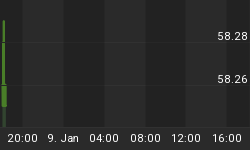Ralph Nelson Elliott discovered the Wave Principle in the 1930s. Over the decades, his discovery was kept alive by a handful of individuals. A few of those, such as Bolton, Prechter and Frost, educated investors on how to use pattern analysis in financial markets.
To help out Elliott Wave International's readers in learning the basics of the method, we put together a free 10-lesson online tutorial. Here's an excerpt. To get it in full, look for details below.
EWI's Basic Elliott Wave Tutorial
Lesson 1, excerpt
At that time [of his discovery], with the Dow in the 100s, R. N. Elliott predicted a great bull market for the next several decades that would exceed all expectations at a time when most investors felt it impossible that the Dow could even better its 1929 peak. As we shall see, phenomenal stock market forecasts, some of pinpoint accuracy years in advance, have accompanied the history of the application of the Elliott Wave approach.
Under the Wave Principle, every market decision is both produced by meaningful information and produces meaningful information. Each transaction, while at once an effect, enters the fabric of the market and, by communicating transactional data to investors, joins the chain of causes of others' behavior. This feedback loop is governed by man's social nature, and since he has such a nature, the process generates forms. As the forms are repetitive, they have predictive value.
The market...is not propelled by the linear causality to which one becomes accustomed in the everyday experiences of life. Nor is the market the cyclically rhythmic machine that some declare it to be. Nevertheless, its movement reflects a structured formal progression. In markets, progress ultimately takes the form of five waves of a specific structure.

Three of these waves, which are labeled 1, 3 and 5, actually effect the directional movement. They are separated by two countertrend interruptions, which are labeled 2 and 4, as shown in Figure 1-1. The two interruptions are apparently a requisite for overall directional movement to occur.
At any time, the market may be identified as being somewhere in the basic five wave pattern at the largest degree of trend.
Read the rest of this 10-lesson Tutorial and see multiple charts now, free! All you need is to create a free Club EWI profile.
Read the rest of this 10-lesson Basic Elliott Wave Tutorial online now, free! Here's what you'll learn:
- What the basic Elliott wave progression looks like
- Difference between impulsive and corrective waves
- How to estimate the length of waves
- How Fibonacci numbers fit into wave analysis
- Practical application tips for the method
- More
Keep reading this free tutorial today.
















